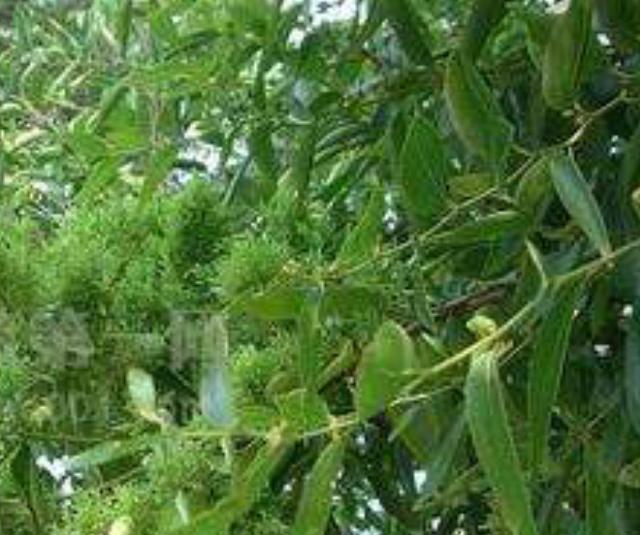Originating from the transition zone of temperate subtropical zones, jujube trees are one of the earliest fruit tree species in the world, and are endemic fruit trees native to China. According to historical data, China's cultivation of jujube trees has a history of more than 3,000 years, is one of the earliest cultivated fruit tree species in China, is China's first large dried fruit and the seventh largest fruit tree, occupies an important position in the fruit economy.
The diseases on jujube trees are mainly jujube madness, jujube rust, anthrax, tin, brown spot disease, rot disease, mosaic disease, yellow leaf disease and so on. So what's going on with the jujube tree going crazy?

First, jujube madness
Jujube tree madness is that the jujube tree has jujube madness, also known as male jujube tree, tuft disease, broom disease, dragon disease, etc., is a devastating disease, mainly parasitic jujube and sour jujube. The disease has caused devastating damage in some jujube areas.
Second, the onset of symptoms
Jujube madness can cause branches, leaves, flowers, and roots to fail to grow and develop normally, forming a phenomenon of overgrowth of branches and leaves. Specifically, the flower vessel returns to the ancestors, and the shoots grow abnormally. The peduncle becomes longer, 3–6 times longer than normal flowers. Sepals, petals, stamens and pistils grow abnormally and become pale green leaflets, a flower becomes a 2–3 cm twig, and an inflorescence becomes a clump of twigs. The shoots sprout small branches and leaves many times a year, forming dense clumps of branches, the leaves are yellow-green, dry and do not fall off in winter. After the onset of the root disease, the germinating root tillers are also densely clustered, and the root bark decays and dies later.
Third, the law of pathogenesis
Jujube fever usually occurs first in some branches or tillers, and then gradually spreads to the whole tree. In a tree, the upper branches generally occur first, and there are also whole trees that occur at the same time, and the symptoms of jujube head and root tillers in that year are obvious. The trees are weak, overgrown with weeds, the results are excessive, the soil is dry and poor, and the extensively managed jujube orchards are susceptible to infection.
Jujube orchards with a high level of integrated management have a low incidence. The jujube madness pathogen spreads naturally and is mainly transmitted by leafhopper pests such as the rhomboid leafhopper, the concave edge rhombus leafhopper and the orange-banded rhomboid leafhopper. Diseased trees are infected by grafting, and after the young trees graft the diseased bark of crazy trees, the incubation period is as short as 25–31 days and as long as 372–382 days. The length of the incubation period is related to the growth and development of jujube trees, and the incubation period of strong plants and branching growth season is short, and conversely, the incubation period is long.
The occurrence of jujube madness usually begins with symptoms on some branches and root tillers, and then gradually expands to the whole tree. Young jujube trees generally die 1-2 years after the onset of disease, and large trees generally die gradually after 3-7 years after infection. However, the seeds, pollen and soil of jujube trees do not spread germs.
Fourth, prevention and control methods
1, once the symptoms of jujube madness are found, immediately remove the diseased trees and tillers, completely remove the infectious diseases in the jujube garden and nearby, and prevent the continued spread of the disease. Even if a tree has a diseased branch, it should be cut off the whole tree, not only to remove the diseased branch and not to plan the tree, otherwise it will cause the evil consequences of continuing to spread the pathogen.
2, cultivate disease-free seedlings, select disease-free mother plants to collect knotweeds, cuttings and propagation of root tillers. Strengthen the quarantine of seedlings, and strictly prohibit sick seedlings from entering the jujube area.
3. Choose disease-resistant varieties and rootstocks. Between different jujube varieties, the disease resistance varies greatly, such as the susceptibility of golden silk jujube, the incidence of the plant is as high as 60%, the tengxian red jujube is more resistant to disease, the plant incidence rate is only 3.4%, and the Jiaocheng vinegar jujube is immune to jujube madness. Rootstocks should also choose disease-resistant acid jujube varieties and disease-resistant cultivated jujube varieties with seed kernels.
4, strengthen field management, increase alkaline fertilizer and farm manure, enhance tree potential, improve disease resistance (saline-alkali land rarely occurs). The soil is poor and arid, the management is extensive, and the disease is heavy if the tree is weak, and the disease is light on the contrary. Therefore, strengthening field management, increasing the application of organic fertilizer, and enhancing tree potential are not only conducive to the high yield and stable yield of jujube trees, but also conducive to resisting jujube madness.
5, the drug treatment can be selected from hebei agricultural university developed to dispel madness No. 1, No. 2, the use of trunk infusion method, the treatment effect of diseased trees is remarkable.
I once used a video training of mr. Sun Peibo, a fruit tree expert, to record a recipe for treating jujube madness and share it with everyone.
With the virus No. ➕ 1 ribavirin people for human medicine) 200-300 times ➕ oxytetracycline or tetracycline 200 times ➕ vitamin C300-500 times ➕ tenda 2116➕ brown sugar or silicone ➕1–1.5% zinc sulfate solution, in the germination period of jujube trees, cut off diseased branches, use this solution to apply wounds and trunks below, generally 5-7 days once, with 2-3 times, the year will turn better. You can try it out with this method.